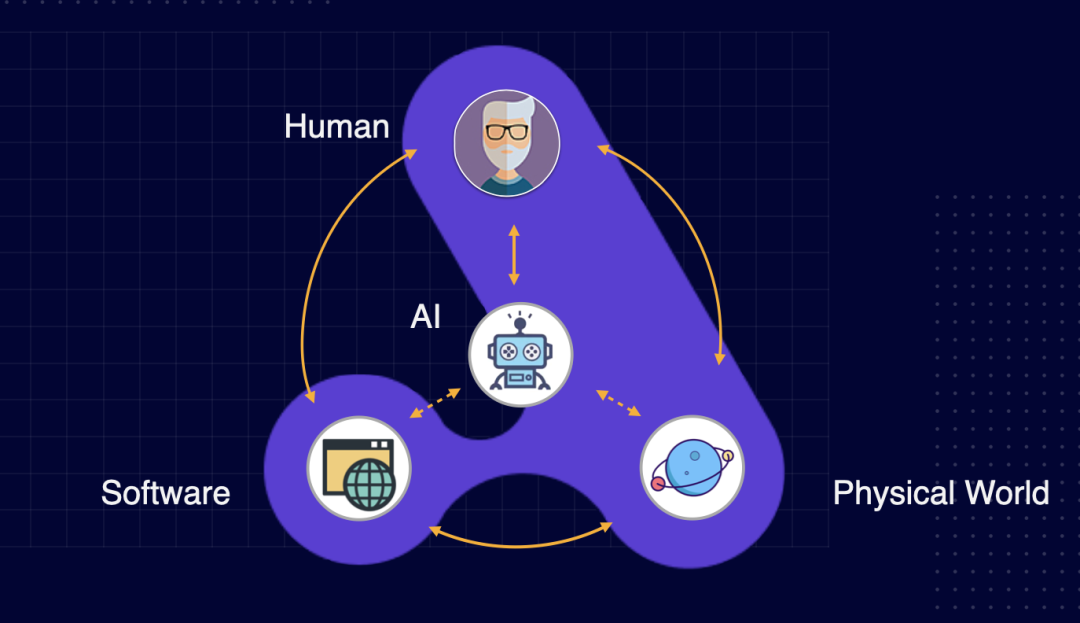swagger详细配置说明
Swagger 是一个规范且完整的框架,用于生成、描述、调用和可视化 RESTful 风格的 Web 服务。Swagger 的目标是对 REST API定义一个标准且和语言无关的接口,可以让人和计算机拥有无须访问源码、文档或网络流量监测就可以发现和理解服务的能力。当通过 Swagger进行正确定义,用户可以理解远程服务并使用最少实现逻辑与远程服务进行交互。与为底层编程所实现的接口类似,Swagge
Swagger
掌握:
-
Swagger的作用和概念
-
前后端分离概念
-
在Springboot中集成Swagger
前后端分离
当前:vue+springboot
后端时代:前端只管理静态页面。写好后交给(html页面)交给后端处理。当时用到的模板引擎JSP,需要放进服务器跑,后端是主力。
前后端分离时代:
- 后端:后端服务层,服务层,数据访问层 【后端团队】
- 前端:前端控制层,视图层 【前端团队】
- 伪造后端数据,json数据。不需要后端团队程序也能跑起来
- 前后端交互 ===> API
- 前后端相对独立,松耦合
- 前后端可以部署在不同服务器
产生问题:
- 前后端集成联调,前端人员和后端人员无法做到“即使协商,尽早解决”,最终导致问题集中爆发。
解决办法:
- 首先制定schema(计划/提纲/纲要)。实时更新最新API,降低集成风险
- 早些年,制定work计划文档。
- 前后端分离:
- 前端测试后端接口:postman
- 后端提供接口,需要实时更新最新消息及改动。
Swagger简介
Swagger 是一个规范且完整的框架,用于生成、描述、调用和可视化 RESTful 风格的 Web 服务。
Swagger 的目标是对 REST API 定义一个标准且和语言无关的接口,可以让人和计算机拥有无须访问源码、文档或网络流量监测就可以发现和理解服务的能力。当通过 Swagger 进行正确定义,用户可以理解远程服务并使用最少实现逻辑与远程服务进行交互。与为底层编程所实现的接口类似,Swagger 消除了调用服务时可能会有的猜测。
Swagger 的优势
- 支持 API 自动生成同步的在线文档:使用 Swagger 后可以直接通过代码生成文档,不再需要自己手动编写接口文档了,对程序员来说非常方便,可以节约写文档的时间去学习新技术。
- 提供 Web 页面在线测试 API:光有文档还不够,Swagger 生成的文档还支持在线测试。参数和格式都定好了,直接在界面上输入参数对应的值即可在线测试接口。
项目中使用Swagger需要springboot
- swagger2
- ui
spring boot中集成Swagger
1、新建springboot项目
2、导入相关依赖
<!-- https://mvnrepository.com/artifact/io.springfox/springfox-swagger2 -->
<dependency>
<groupId>io.springfox</groupId>
<artifactId>springfox-swagger2</artifactId>
<version>3.0.0</version>
</dependency>
<!-- https://mvnrepository.com/artifact/io.springfox/springfox-swagger-ui -->
<dependency>
<groupId>io.springfox</groupId>
<artifactId>springfox-swagger-ui</artifactId>
<version>3.0.0</version>
</dependency>
3、编写hello工程
package com.luyidog.swaggerdemo.controller;
import org.springframework.web.bind.annotation.RequestMapping;
import org.springframework.web.bind.annotation.RestController;
@RestController
public class HelloController {
@RequestMapping(value = "/hello")
public String hello() {
return "hello";
}
}
4、配置SwaggerConfig
package com.luyidog.swaggerdemo.config;
import org.springframework.context.annotation.Configuration;
import springfox.documentation.swagger2.annotations.EnableSwagger2;
@Configuration //加入到配置类 springboot声明配置类
@EnableSwagger2 //开启Swagger2
public class SwaggerConfig {
}
5、测试访问页面
测试地址/swagger-ui.html,出现swagger接口文档页面
6、配置Swagger的bean实例Docket
使用提供的构造方法接管默认的方法
Swagger的bean实例Docket
package com.luyidog.swaggerdemo.config;
import io.swagger.annotations.Api;
import org.springframework.context.annotation.Bean;
import org.springframework.context.annotation.Configuration;
import springfox.documentation.service.ApiInfo;
import springfox.documentation.service.Contact;
import springfox.documentation.spi.DocumentationType;
import springfox.documentation.spring.web.plugins.Docket;
import springfox.documentation.swagger2.annotations.EnableSwagger2;
import java.util.ArrayList;
@EnableSwagger2 //开启Swagger2
@Configuration //加入到配置类 springboot声明配置类
public class SwaggerConfig {
//配置了Swagger的Docket的Bean实例
@Bean
public Docket docket() {
return new Docket(DocumentationType.SWAGGER_2)
.apiInfo(apiInfo());
//new ApiInfo("Api Documentation", "Api Documentation", "1.0", "urn:tos", DEFAULT_CONTACT,
// "Apache 2.0", "http://www.apache.org/licenses/LICENSE-2.0", new ArrayList());
}
//配置Swagger信息 => apiInfo()
private ApiInfo apiInfo() {
//作者信息
final Contact contact = new Contact("Naughty", "https://blog.csdn.net/g200000", "luyidog@aliyun.com");
return new ApiInfo("Naughty的SwaggerDemoAPI文档",
"年轻就应该投资大脑",
"v1.0",
"https://blog.csdn.net/g200000",
contact,
"Apache 2.0",
"http://www.apache.org/licenses/LICENSE-2.0",
new ArrayList());
}
}
7、配置扫描接口及开关
Docket.select()
源码中有具体详细的实现过程
//配置了Swagger的Docket的Bean实例
@Bean
public Docket docket() {
return new Docket(DocumentationType.SWAGGER_2)
.apiInfo(apiInfo())
//.enable(flag)
.select()
//RequestHandlerSelectors:配置要扫描接口的方式
//basePackage:指定要扫描的包
//any() :扫描全部
//none():都不扫描
//withClassAnnotation(RestController.class):扫描类上的注解,参数是一个注解的反射对象
//withMethodAnnotation(GetMapping.class):扫描方法上的注解
.apis(RequestHandlerSelectors.basePackage("com.luyidog.swaggerdemo.controller"))
//paths()过滤什么路径
.paths(PathSelectors.ant("/luyidog/**"))
.build();//build新建某个东西=>扫描接口
}
Q:在生产环境中使用swagger,在发布的时候不使用。
A:获取当前项目生产环境,判断是否为设定的的环境,否则返回false
public Docket docket(Environment environment) {
//Q:在生产环境中使用swagger,在发布的时候不使用。
//获取当前项目的生产环境
Profiles profiles = Profiles.of("dev","test");//设置要显示的swagger环境
//通过environment.acceptsProfiles()判断是否处在自己设定的环境
final boolean flag = environment.acceptsProfiles(profiles);//生产、测试环境返回true
return new Docket(DocumentationType.SWAGGER_2)
.apiInfo(apiInfo())
.enable(flag)
.select()
.apis(RequestHandlerSelectors.basePackage("com.luyidog.swaggerdemo.controller"))
//.paths(PathSelectors.ant("/luyidog/**"))
.build();//build新建某个东西=>扫描接口
}
8、分组和接口注释及小结
.groupName("Naughty")//配置默认分组
协作开发使用,设置不同分组扫描自己的接口,用于说明
配置多个分组:设置多个Docket即可
@Bean
public Docket docket(Environment environment) {
//Q:在生产环境中使用swagger,在发布的时候不使用。
//获取当前项目的生产环境
//设置要显示的swagger环境
Profiles profiles = Profiles.of("dev", "test");
//通过environment.acceptsProfiles()判断是否处在自己设定的环境
final boolean flag = environment.acceptsProfiles(profiles);
return new Docket(DocumentationType.SWAGGER_2)
.apiInfo(apiInfo())
.groupName("Naughty")//配置默认分组
.enable(flag)
.select()
.apis(RequestHandlerSelectors.basePackage("com.luyidog.swaggerdemo.controller"))
//.paths(PathSelectors.ant("/luyidog/**"))
.build();//build新建某个东西=>扫描接口
}
@Bean
public Docket docket1() {
return new Docket(DocumentationType.SWAGGER_2).groupName("A");
}
@Bean
public Docket docket2() {
return new Docket(DocumentationType.SWAGGER_2).groupName("B");
}
给属性或接口写注释信息:
package com.luyidog.swaggerdemo.controller;
@RestController //声明所有Controller返回json格式,可以直接编写返回接口
public class HelloController {
@GetMapping(value = "/hello")
public String hello(@ApiParam("用户名") String username) {
return "hello" + username;
}
@ApiOperation("Hello控制类")//放到接口方法上,接口注释文档
@PostMapping(value = "/user")
public User user() {
return new User();
}
}
/////////////////////////
package com.luyidog.swaggerdemo.pojo;
import io.swagger.annotations.Api;
import io.swagger.annotations.ApiModel;
import io.swagger.annotations.ApiModelProperty;
//@Api("模块注释信息")
@ApiModel("用户实体类")
public class User {
@ApiModelProperty("用户名")
public String username;
@ApiModelProperty("密码")
public String password;
}
总结:
我们可以通过swagger给一些比较难理解的属性或接口写注释信息,并且接口文档实时更新,支持在线测试
注意:
在正式发布的时候关闭Swagger
更多推荐
 已为社区贡献1条内容
已为社区贡献1条内容










所有评论(0)